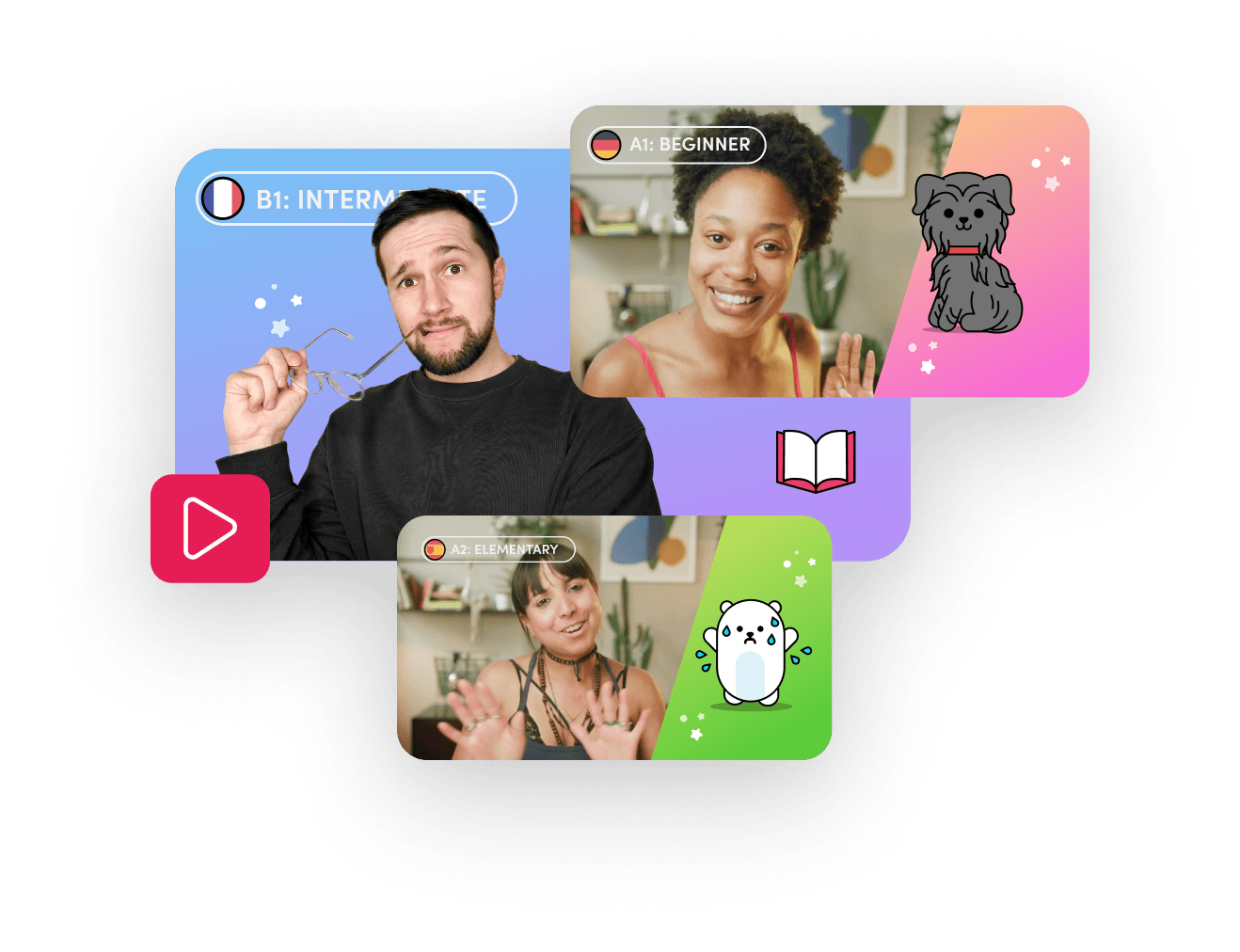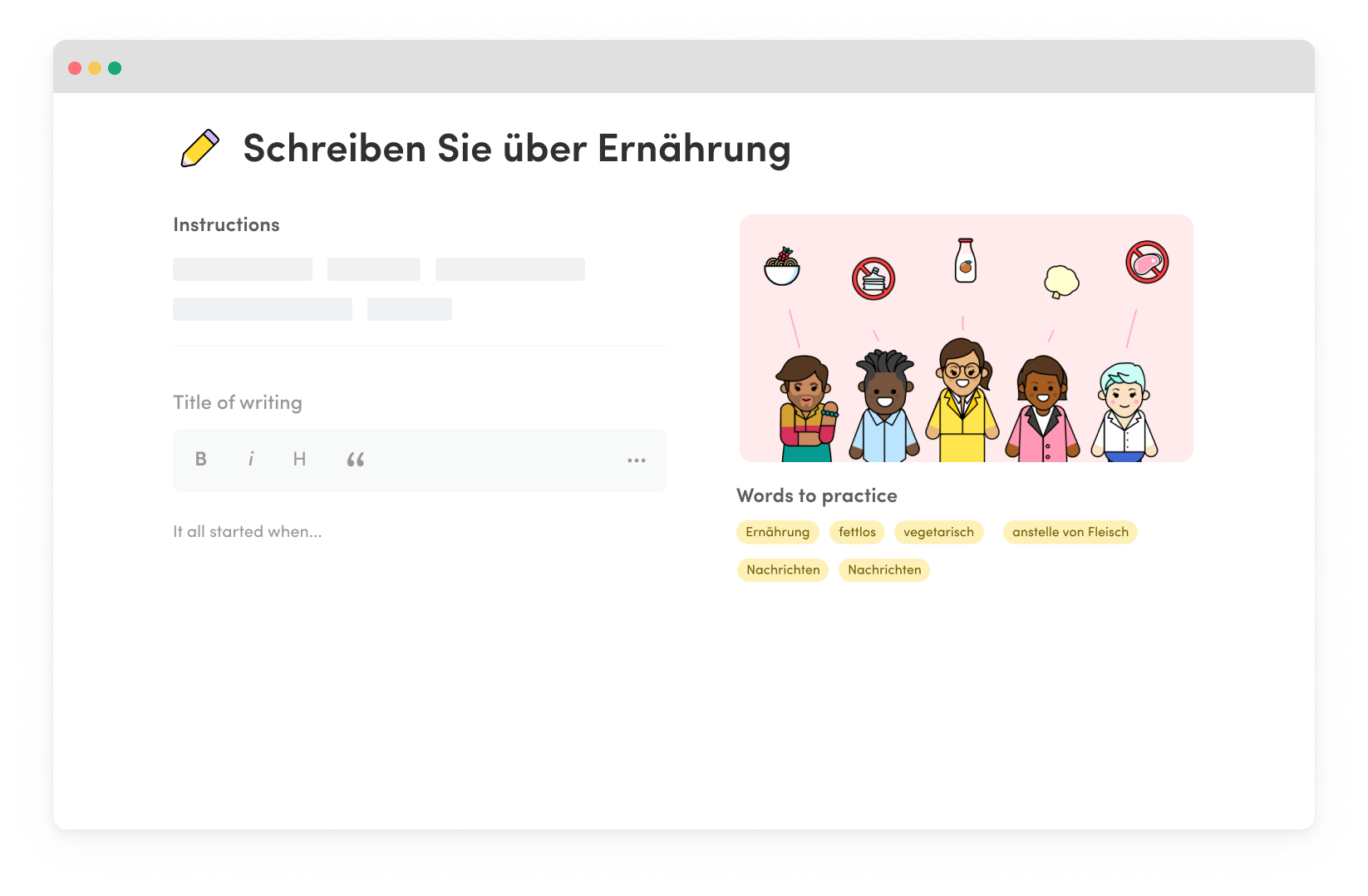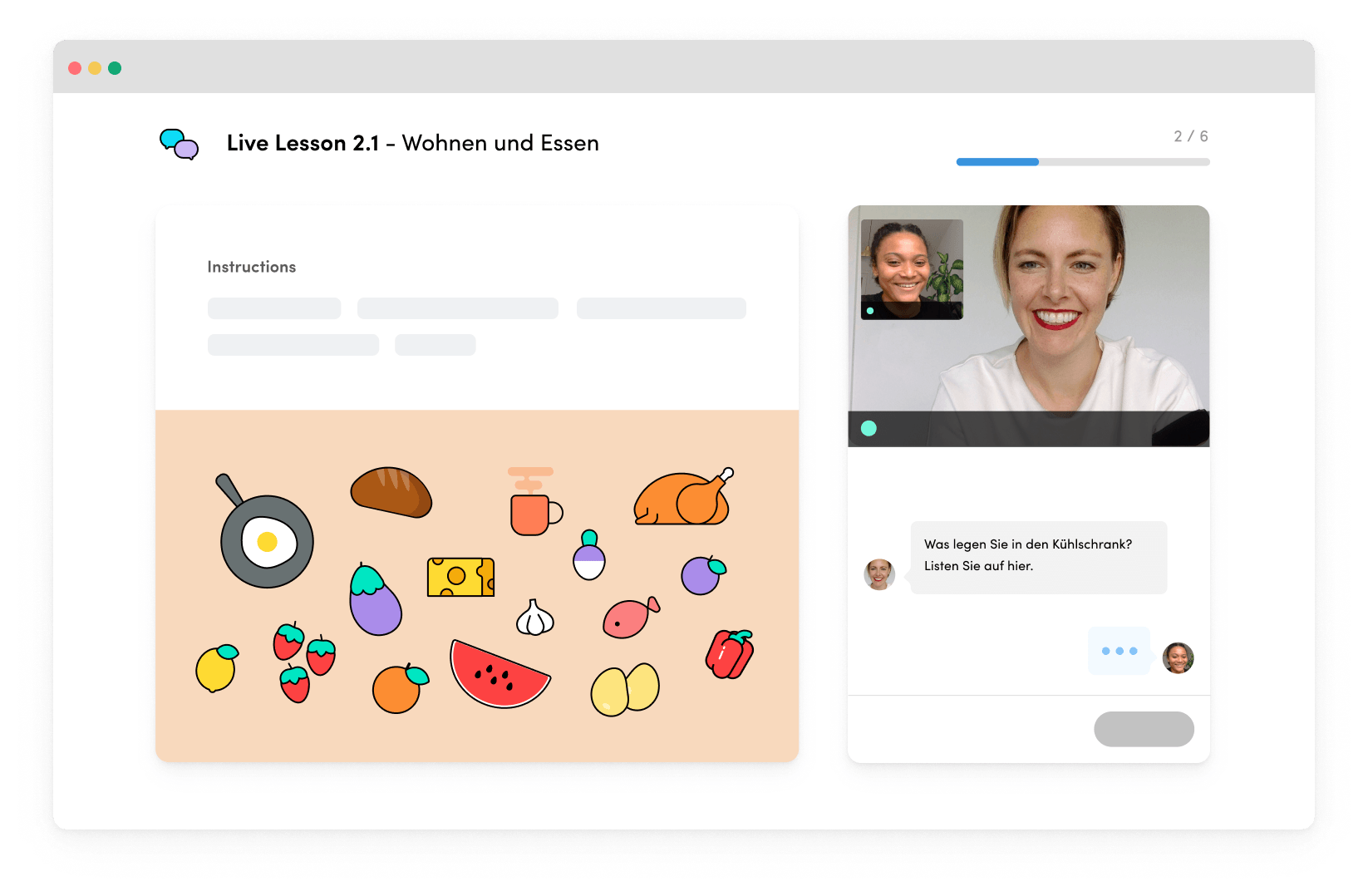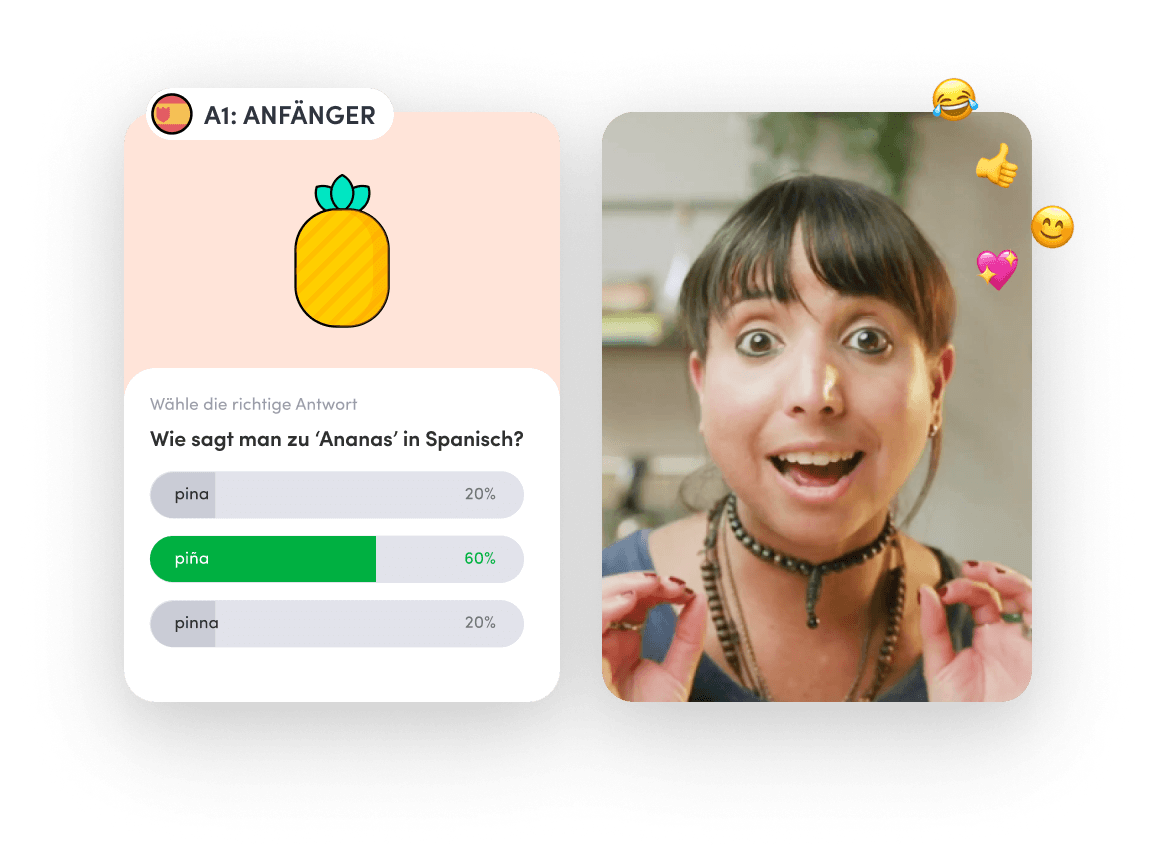Language learning for humans by humans: Chatterbug
Language learning for humans by humans: Chatterbug
OQ sits down with Anne Leuschner, COO at Chatterbug

Ich spreche kein Deutsch
Yo no hablo español
je ne parle pas français
If you want to speak German, Spanish or French, but the extent of your vocabulary is one of the above phrases, you need a new gameplan.
They say the best way to learn a new language is to immerse yourself in it. Some research even suggests learning a new language while you sleep, while others say the best way to learn a new language is conversing with a native speaker. Chatterbug offers you exactly that.
The language learning app, which was created in 2016 by founders of the US tech unicorn GitHub, is an online language learning platform which includes both self-study and live lessons. As part of our E-learning month we sat down with Chatterbug’s COO Anne Leuschner to learn more about how their product and team has evolved since 2016.
Where the magic happens: Berlin, Germany
Funding Received: $15 million over 5 years
Tech Stack: React Native (Mobile) React, Javascript, Ruby on Rails, GraphQL (Web App) Heroku, Postgres (Hosting) Redis (Data Stores)
Users: 100,000
Founded: 2016
Can you tell me a little more about yourself and what attracted/ interested you to join the team at Chatterbug initially?
I was driven by curiosity of what happens if I team up with the founders of the US tech unicorn GitHub, to truly rethink the language learning space by leveraging technology. I have this background in consumer products and they had this track record in the deep technology space and I thought that bringing these experiences together to build a product for a market that is large and poorly served seemed very exciting.
Can you explain in a nutshell how Chatterbug helps users with language learning?
“Up to now, if someone asks me about what the most effective way to learn another language is, my answer will always be full immersion. But this approach is difficult, expensive and rarely an option for adult professionals.”
With Chatterbug we aim to be a year abroad in an hour per day. We believe in language acquisition through listening to and interacting with real humans. The student can choose from our suite of products. Be it our newest product called Streams, a mobile app that introduces video-based language immersion via live streams, or our established lessons product, a web app that will make you speak via 45 minute 1-1 online lessons, we meet the learner where they are.
 How much has Chatterbug evolved since 2016?
How much has Chatterbug evolved since 2016?
When we first started, we were focusing on a very specific, high-end of the language learning market – the people who would spend many hours per week on acquiring a new language very quickly. We built a great product, focused on making it easier to progress very far, very quickly.
“In the last few years we’ve found that we’ve lagged where most other language learning tools do well, which is with total beginners. Most beginners have a hard time going directly into speaking for 45 minutes with native speakers and so where we are effective, we have found that we can also be overly intimidating.”
Likewise, we’ve found that homework is really difficult. Talking to people is easy because people are interesting – there is something about dialogue with human beings that makes time pass pretty quickly. But studying flashcards is a very different, very easily boring task.
Recently we’ve pivoted a lot of our focus to making study time and the first introduction to the language much more approachable, yet still human and effective. We’ve recently launched our Streams app, where you can learn a language by watching live and pre-recorded streaming videos on your mobile device.
If you think back to the early days of Chatterbug, what were the biggest challenges you faced as a growing startup?
There are a lot of individual issues I can think of, but the largest problem is finding product/market fit. I could talk about our struggles with various German bureaucracies, bridging the cultural or technical requirements of employing both US and German employees, etc.
“The biggest issue that overrode everything else was taking a product that we knew worked well and trying to make sure that we could find the people who needed and valued it.”
Furthermore, it means trying to make sure your own company understands this and works towards this goal too. There is an overriding sense among employees sometimes that you are a faceless corporation and it’s always a struggle to communicate that we’re all trying to make a new idea work, that success is not a given.
“Trying to build and nurture a mindset of testing and iteration in your company, to have everyone think of themselves as an owner, this is constantly a challenge to any growing startup I think, including ours.”

How does Chatterbug innovate?
This is a great question. I suppose the answer to this will always be something along the lines of “thinking outside the box”, but I guess the difficult answer is how that happens in any organization. For Chatterbug, we face a lot of large competitors like Duolingo, Babbel and Rosetta Stone and so coming into a crowded market like this with the knowledge that none of those products really work, gives us an interesting challenge to innovate. How do we help provide something that millions of people obviously want and these big players are obviously not delivering?
“Our answer has been: humans. Human beings are our innovation strategy. In a market that is fundamentally human, all of our competition is heading for the robotic hills. Cut costs by cutting out human beings. The problem is that it doesn’t work.”
We’re looking at every product that we focus on and ask ourselves how we can make this thing we’re trying to do both effective and human. Streams is a great example of this. We wanted to find some way for our learners to learn vocabulary and grammar in a way that was effective and human and streaming video was a clearly interesting and innovative path.
What do you predict for the future of E-learning?
Commonly, we’ve seen short-term trending towards automation and AI at the expense of engagement. If you’re learning with a robot, then you can scale that learning, who cares if it’s a poor experience?
I think that COVID and the explosion of at-home learning has both been a boon to this industry of remote learning but also uncovered some structural issues of not being in contact with human beings in real ways. It has exposed the weaknesses of taking people out of the learning process. There is something very powerful and unavoidable in the human component of learning and it’s devastating when we miss out on that.
“I think that the future of learning is a strong and smart combination of humanity and technology. To use technology to connect human beings in ways that are most interesting and powerful, rather than to cut humans out because they’re inefficient. I think that we’re leading this edge in the language learning space, but it’s important throughout the e-learning and digital education space in general.”
What’s next for Chatterbug?
World domination, obviously.
Seriously, we want what we have always wanted – to have millions of people learn a language that they never would have without us. Language is a key to bridging cultures, to helping people understand and relate to each other. It helps people meet, communicate, interact, learn and fall in love. We don’t want people to learn proper word order or verb endings, we want people to cross cultures because they understand each other in a way they wouldn’t before Chatterbug.
Chatterbug has changed what we traditionally knew about learning new languages. It’s clear that their human-centric approach has led them to be at the forefront of Language Learning and the E-learning space as a whole.
Start learning with Chatterbug
Want more from Orange Quarter?
Subscribe to our monthly newsletter for the latest news in technology, jobs and advice from industry experts.

